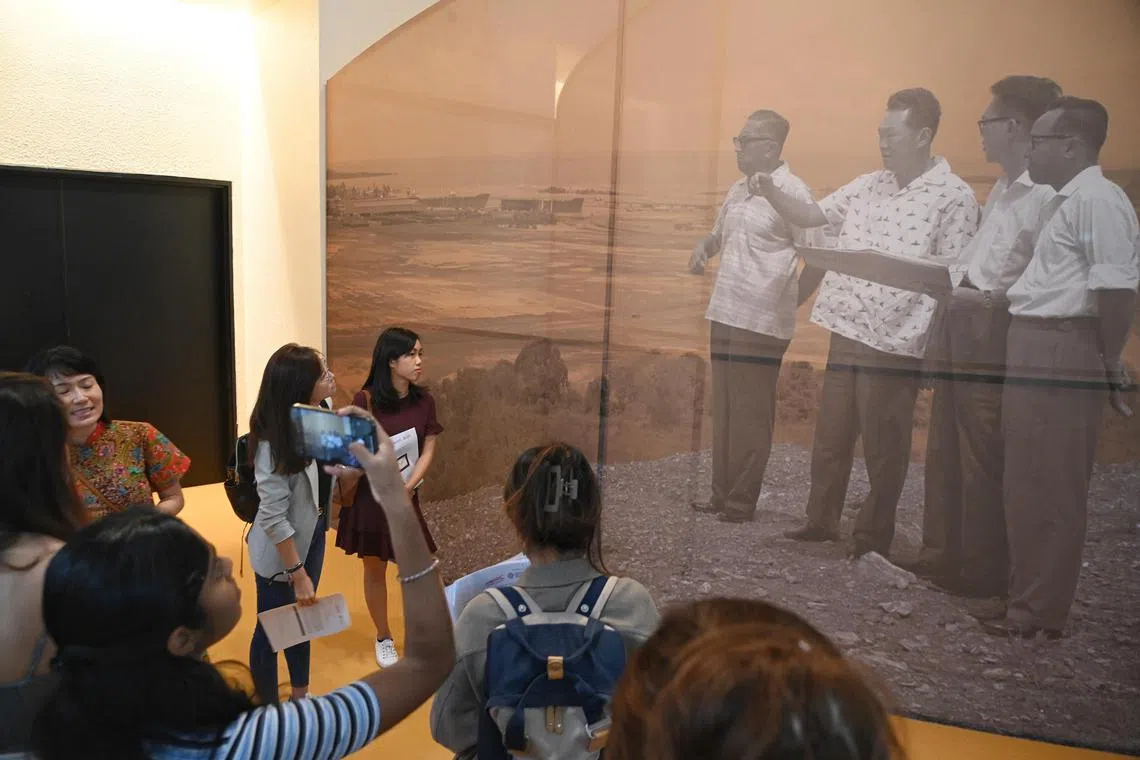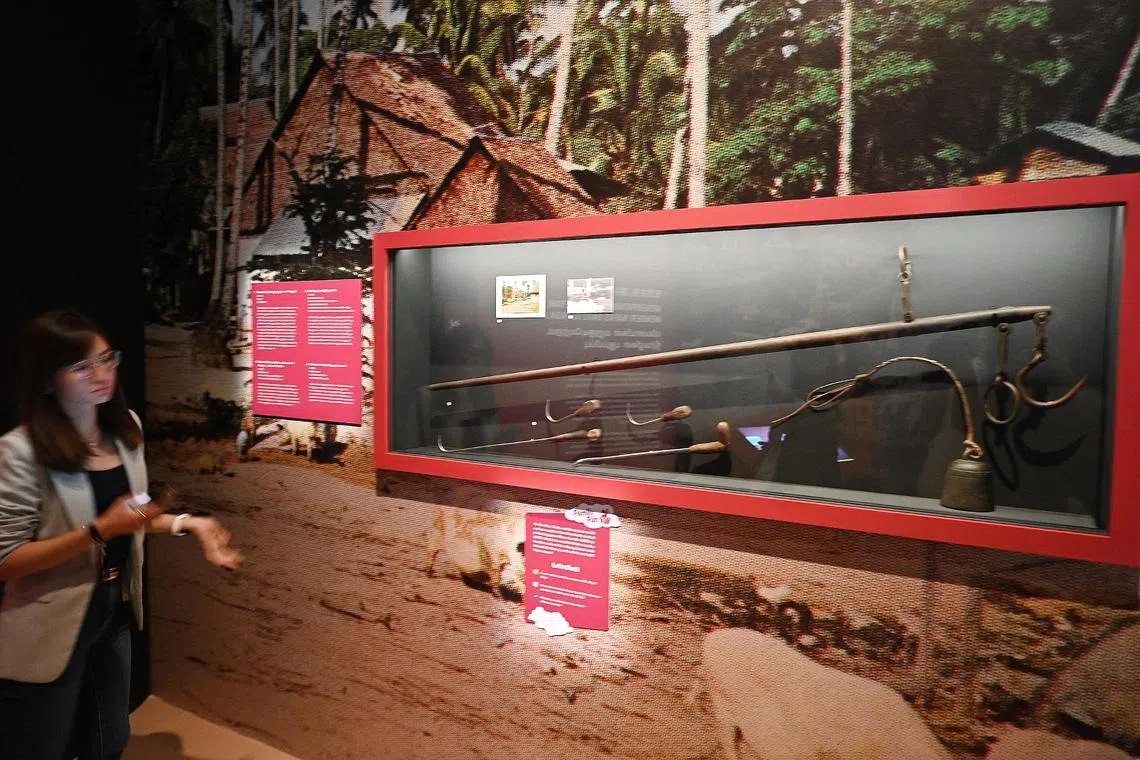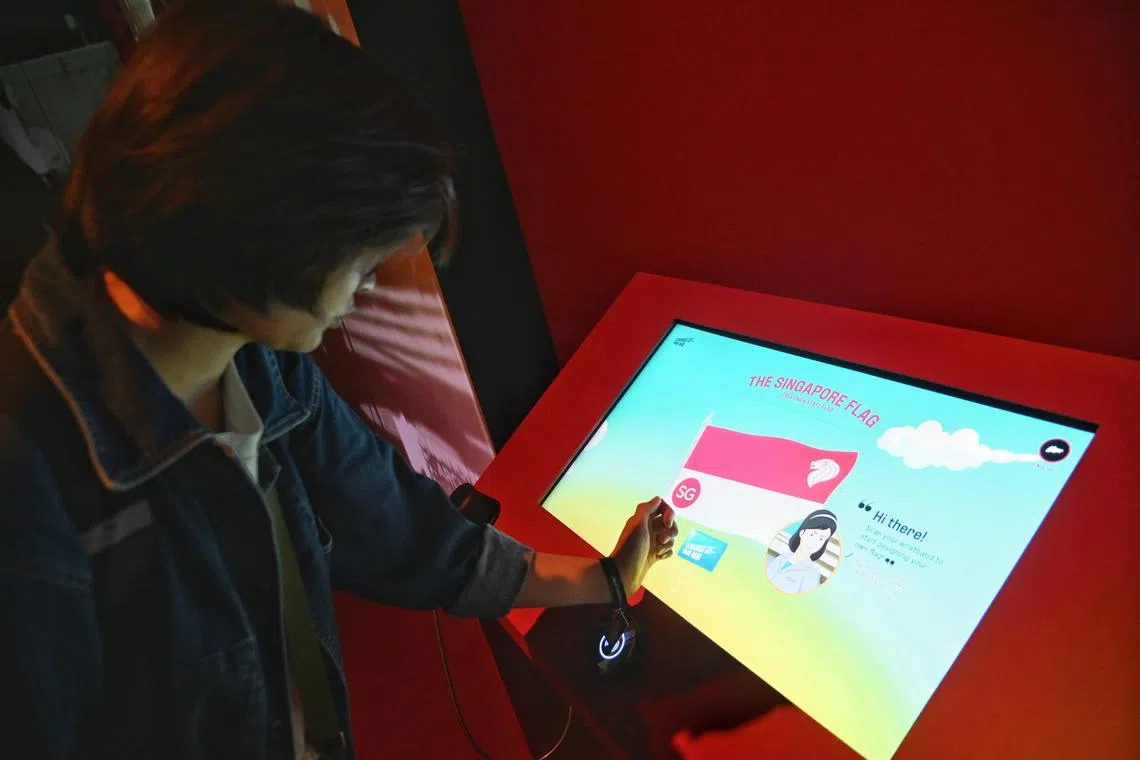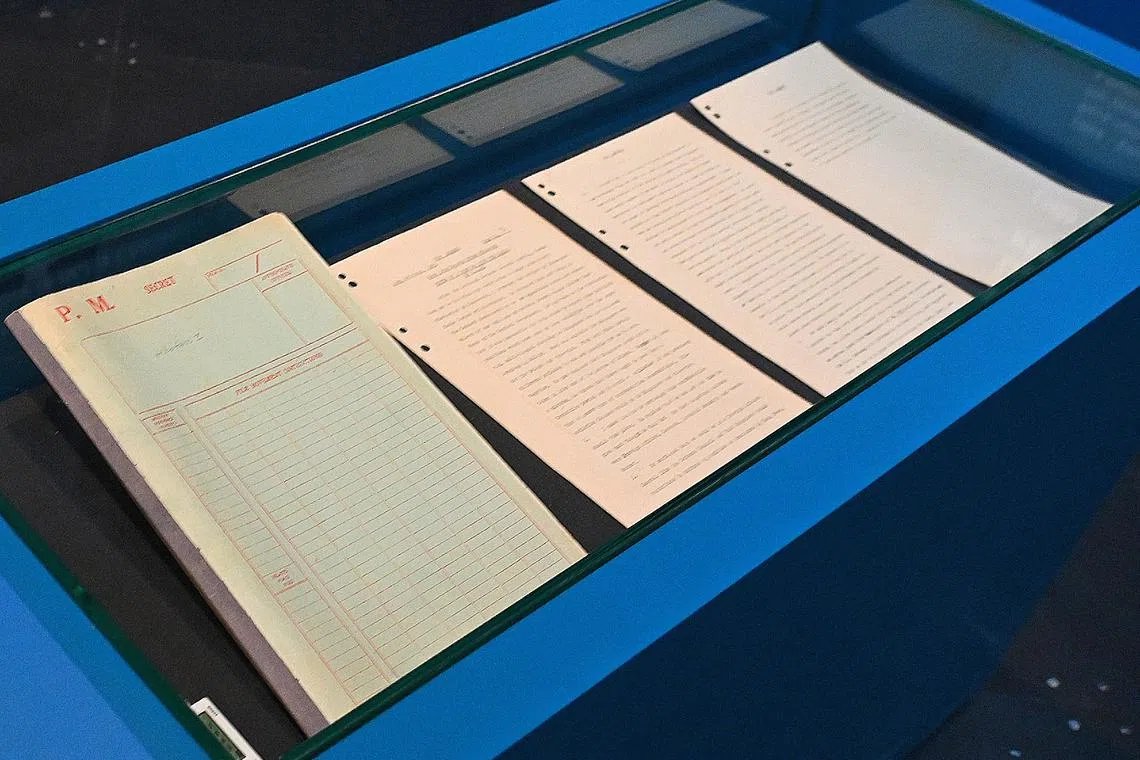Founders’ Memorial launches exhibition on Singapore’s nation-building years
Sign up now: Get ST's newsletters delivered to your inbox

The exhibition features stories about the dilemmas and decisions that pioneer Singaporeans and leaders faced from the 1950s to the 1970s.
ST PHOTO: DESMOND WEE
Follow topic:
SINGAPORE – It was a major agricultural activity and a source of livelihood for some but, owing to environmental concerns, pig farming was phased out and stopped in Singapore in 1984.
Among those affected was farmer Tan Kah Hoe, whose family had reared pigs in Kampong San Teng – present-day Bishan – from the 1930s to the 1970s. In 1978, they gave up the life they had known for decades by moving to a three-room Housing Board flat in Ang Mo Kio.
A weighing scale made of wood and metal that was once used on their farm to weigh live pigs now lies in the National Museum of Singapore as part of a new exhibition by the Founders’ Memorial, which is set to open in 2027 at Bay East Garden in Gardens by the Bay.
Called Semangat Yang Baru: Forging A New Singapore Spirit, the exhibition, which was launched on Thursday, features stories about the dilemmas and decisions that pioneer Singaporeans and leaders faced from the 1950s to the 1970s – Singapore’s nation-building years.
These challenges are presented through items and stories contributed by the public and from government institutions. One of these is the pig scale, which the Founders’ Memorial used as a lead-in to tell of competing environmental and economic priorities that confronted policymakers in Singapore’s early years, as well as the sacrifices made by the farmers who had to be resettled.
Following a call for public contributions to the memorial in April 2022
Another public contribution on display is a set of posters that remind visitors of how funds were raised to build the old National Stadium in Kallang.
Two million coupons were distributed by Singapore Pools in 1968 for its new Toto game, with proceeds from the tickets used to fund the stadium’s construction.
But this initiative did not receive all-round support, noted a write-up at the exhibition, which said an adjournment motion that objected to the introduction of legalised gambling was raised in Parliament in December that year.

A daching pig weighing scale contributed to the Founders' Memorial by Mr Tan Kah Hoe and Madam Amy Phua.
ST PHOTO: DESMOND WEE
Minister for Culture, Community and Youth Edwin Tong said at the exhibition’s launch that Singaporeans have been part of “every step of the Founders’ Memorial journey”, adding that those engaged wanted narratives to be told in a way that is authentic and resonant.
The Founders’ Memorial said that in curating the exhibition, it conducted in-depth interviews with close to 200 people, including academics, educators, community leaders, youth and seniors, on stories to be featured and how to present them.
These conversations led the memorial’s team to choose a values-based narrative, said Ms Wong, explaining that rather than present events chronologically, the exhibition groups stories based on the values they demonstrate.
For instance, she said, the story of Singapore’s public housing development and the Singapore River clean-up were grouped together in a section centred on courage and boldness. She added that the curatorial team aimed for visitors’ experience to be personalised and authentic.
To this end, a set of virtual guides were introduced for the exhibition, which the memorial said will help visitors to understand the trade-offs and impact of policy decisions for individuals and communities.
At the start of the exhibition, visitors choose one guide to accompany them through the gallery, and their choice is registered on an RFID tag that they can scan at stations within the gallery.

A visitor scanning an RFID tag at one of the interactive stations at the exhibition.
ST PHOTO: DESMOND WEE
Stories told by these guides are based on real-life profiles, said Ms Wong, citing a guide whose story was modelled after a public servant who experienced tension when resettling hawkers as his own parents plied the trade.
The Founders’ Memorial will solicit public feedback on the storytelling techniques and narratives used in the exhibition to inform the curation of its eventual permanent galleries.

Notes of a meeting with Malaysia’s then Deputy Prime Minister Tun Razak taken by Singapore’s then Deputy Prime Minister Toh Chin Chye in February 1965, on display at the exhibition.
ST PHOTO: DESMOND WEE
Ms Wong said that feedback will be collected through several sources, such as interactive multimedia stations within the exhibition, focus group discussions and volunteer exhibition hosts.
Exhibition curator Joshua Goh, a millennial, said he hopes the exhibition will resonate with those of his generation and inspire them to navigate life’s challenges.
“We want to make connections between the ferments and the turbulence of the 50s and 60s and some of the challenges that we continue to face in Singapore today,” he said, citing the Covid-19 pandemic and digital disruption, among other challenges.
“In exploring our history, we not only get inspiration to overcome the challenges that we have today, but also a better understanding of how the past generations dealt with crises during their time.”

A bulb from a floodlight in the former National Museum (centre) and a series of Toto posters from 1968 featured at the exhibition.
ST PHOTO: DESMOND WEE
Noting that 2023 is the 100th anniversary of founding Prime Minister Lee Kuan Yew’s birth, Mr Tong said the National Museum of Singapore and the Founders’ Memorial will be launching a digital trail that spans the Semangat Yang Baru exhibition and the post-war section of the museum’s Singapore History Gallery.
The museum will also commission local film-maker Royston Tan to produce a short film based on Mr Lee’s past speeches, while the Children’s Museum Singapore will host an exhibition for children to learn more about Mr Lee’s childhood and student days.
Admission to the Semangat Yang Baru exhibition, which runs from Friday to Oct 29, is free for Singaporeans and permanent residents.


